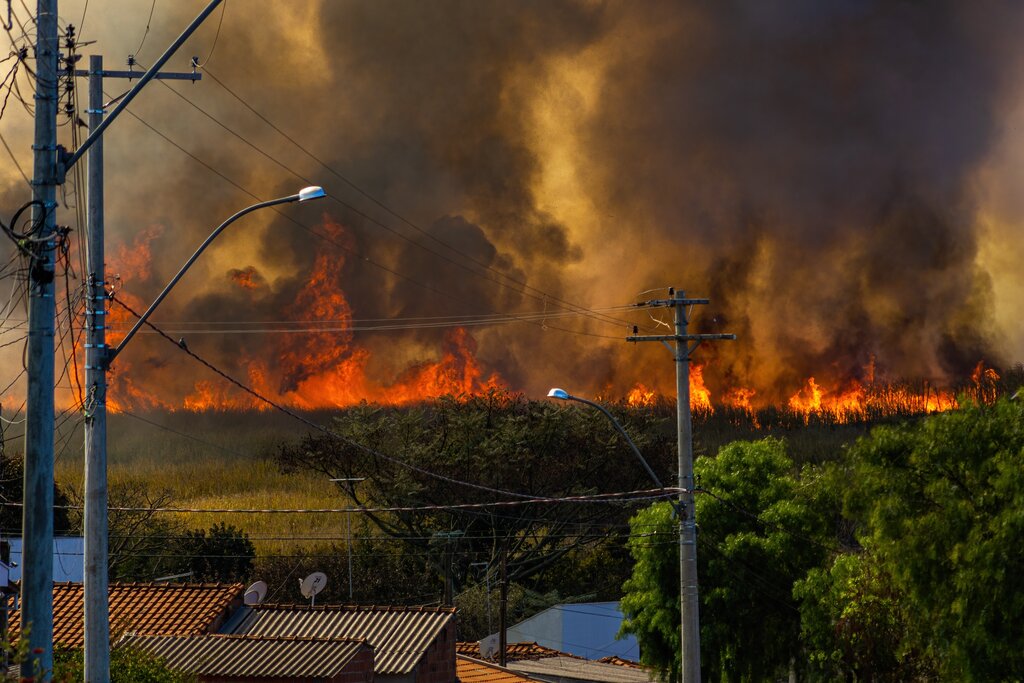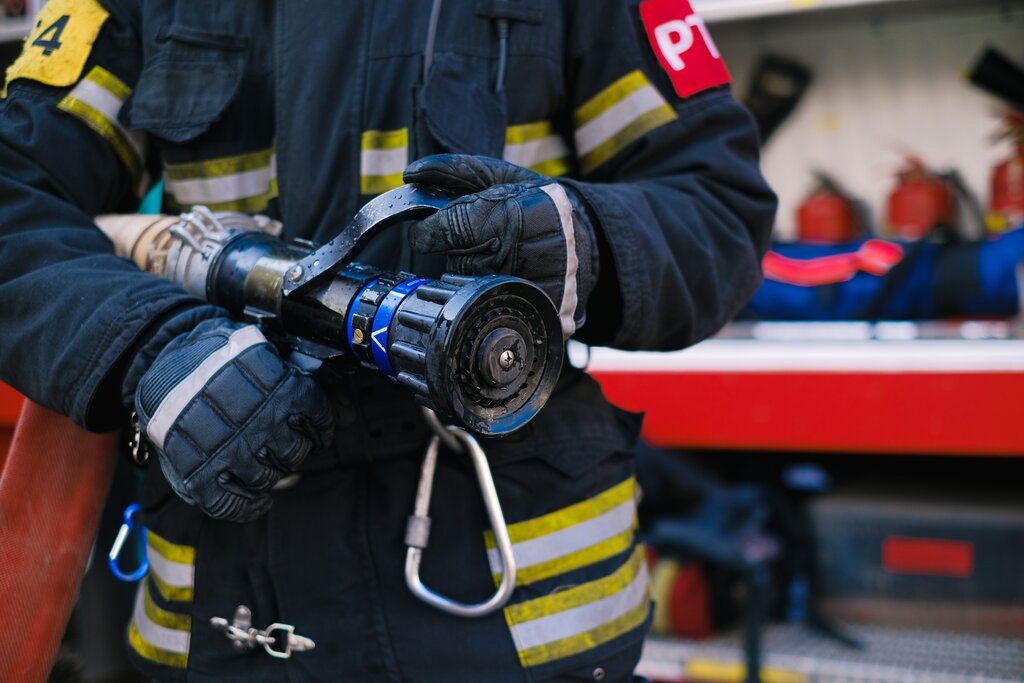Wildfire Fighting Capabilities Vary Widely
Across the Globe
Wherever the climate is moist enough to allow the growth of trees and shrubs, while still having extended dry, hot periods, there’s the risk of wildfires.
This means that wildfires occur on every continent except Antarctica, but the most noted areas on Earth for wildfire include the vegetated areas of Australia, the Western Cape of South Africa, and the dry forests and grasslands of North America and Europe.
The capabilities for fighting wildfires vary widely throughout the world. Not surprisingly, the most technologically advanced cultures are using state-of-the-art systems and equipment. Other cultures (such as areas in South Africa, much of South America, and rural China) rely more on sheer manpower.
Let’s take a short trip around the world to explore the differences…
Africa
Did you know that some 54% of all wildfires occur in Africa? South Africa, especially the Western Cape, is a particular hotspot for wildfire activity. The chaparral and shrubs of the Western Cape can burn fiercely, as can the grasslands to the north.
The problem is, residents of South Africa depend heavily on fire. Among other things, they use it for heat and cooking, since many places in the country have no electricity. Also, since there is no garbage collection in most of the country, every household has an “ash pit,” where the coals from the previous night’s fire are deposited, along with rubbish. This is often a recipe for disaster.
Which is why the South African government piloted a program called Working on Fire (WoF). This program was designed to address the ongoing wildfire issue while also combating the area’s 26% unemployment rate. Disadvantaged South Africans are given extensive training and then hired by the government as wildland firefighters. There are currently more than 5,000 participants in the WoF program, stationed at 200 bases across South Africa. The program has been highly successful in controlling the spread of South Africa’s wildfires.
China
China is not rich in forest sources; its total forest coverage is only 16.5% of the total land. But China’s forest areas are unevenly distributed in the remote areas with sparse population and inconvenient communication, which makes fighting wildfires difficult. High mountains and deep valleys are typical of the Southwest forest areas, which makes fire-extinguishing work even harder, while severe forest fires are easily formed.
Much of China appears to be sorely lacking in basic resources for fighting wildfires — namely, skilled manpower, adequate infrastructure, proper fire extinguishers, and necessary transportation. This is especially true in the rural regions, where about 46% of the country’s people reside. Because of the general lack of advanced fire-extinguishing technology and facilities, once a wildfire occurs, hundreds upon thousands of unskilled residents are usually ordered to participate in firefighting using the most basic of tools.
Australia
In Australia, they’re known as bush fires, and they’re closely linked with droughts, higher temperatures, and El Niño-type climate patterns. Australia’s natural vegetation is very fire prone. For instance, in February 2009, almost a million acres burned in the country’s worst natural disaster in more than a century.
Of all the areas of the world prone to wildfires, Australia may be the most technologically advanced. The government recently rolled out a technology package which included two drones, two mobile command centers, and more than 180 mobile data terminals in fire trucks across the country. The new technology is aimed at ensuring firefighters have access to real-time information when responding to emergencies. Australian firefighters also use a turbine-aided firefighting robot, which can shoot a stream of water 295 feet and can be remotely operated 1,600 feet away.
Europe
An international research team recently identified the following European countries with the highest likelihood of experiencing wildfire damage: Albania, Bulgaria, Cyprus, France, Italy and Spain. Although wildfires are strongly concentrated in the Mediterranean countries, fighting wildfires is a priority in each and every country and region of the European Union.
For instance, in Germany, even the smallest villages are required by law to have a volunteer fire department, which is why some 98% of Germany’s 900,000 firefighters are volunteers. That’s one volunteer firefighter for every 70 Germans — the highest ratio in the world. The backbone of the Austrian fire service is its 320,000 male and female voluntary firefighters, as well. Similarly, the vast majority of Portugal’s 45,000 firefighters are also volunteers, while in Spain, about 90% of the country’s 22,000 firefighters are civil servants plus some 1,500 volunteers.

Pixabay Image
Although most European fire services are staffed by civil service employees under the command of technically trained officers, the Paris and Marseille departments in France are actually military units. The 7,000+ Parisian firefighters are French army soldiers, non-commissioned officers, and officers led by a brigadier general, while the Marseille personnel are Navy sailors commanded by an admiral. The French are considered Europe’s leaders in wildfire combat.
All European firefighters receive basic and advanced training in fire extinguishing. In recent years, extensive training based on the Swedish concepts of flashover intervention has become one of the major tactics employed nearly everywhere. Aerial work, however, is not as extensive as it is in the United States.
South America
More than 50% of the surface area of South America is covered by forest. While the tropical rain forest is typically extremely difficult to ignite, tropical forest fires are becoming more common, primarily due to drought.
A 2000 Global Environmental Outlook report indicated that the most common obstacles to adequate firefighting in most South American countries were lack of financing, technology, and
qualified personnel, as well as the presence of cumbersome and complex legal frameworks. In general, the report stated, forest management and the prevention of wildfires has “only minimal presence in national economic and social strategies.”
But that may be changing. According to a March 2015 issue of the journal for the National Fire Protection Association (NFPA), Chile has recently begun its own Working on Fire program to train and hire firefighting personnel. In fact, Chile is the organization’s second-largest market, with about 1,200 firefighters to date.
The Future
Wildfire risk to people and property continues to be a growing problem around the world. To meet some of these challenges, organizations such as the NFPA and others work closely with many countries including Canada, South Africa, the United Kingdom, Australia, New Zealand and Russia.
Together they develop outreach programs that advocate wildfire mitigation activities for homeowners and communities, and collaborate on a common goal: To reduce the worldwide losses associated with wildfire.
Sources:
Featured Image: Creative Commons Photo by Marie-Lan Nguyen
International Forest Fire News
Fifth International Wildland Fire Conference
Second International Symposium on Fire Economics, Planning, and Policy







